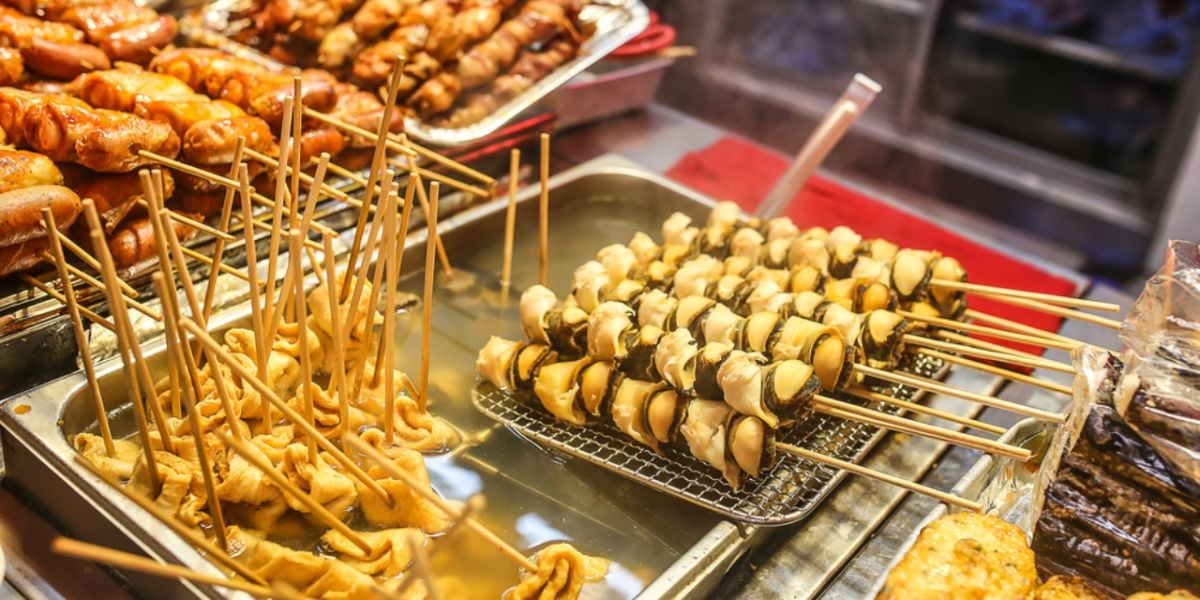
South Korea has a cuisine all its own; one now recognised around the world not only for its rich flavours but also its variety and even its health benefits.
The food culture in Seoul
Meals hold a crucial place in Korean society and culture. They are an opportunity to build friendships and professional connections. However, they are usually consumed quickly. Conversely, it is common to spend hours in a cafe enjoying dessert. This may seem confusing, but you will not find desserts on the menus in restaurants - it's not in Seoul culture to consume these in the same establishment as the meal itself, and Korean cuisine is less varied in terms of sweet than savoury.
Many dishes in South Korea are shared, and often you will not have an individual plate. Instead, there will be several dishes in the middle of the table, and everyone will help themselves from these. Be aware that some restaurants offer only meals for a minimum of two people and could refuse service if you decide to go there alone.
As is often the case in Asia, Seoul cuisine is mostly rice-based in all its forms (rice cakes, noodles, sautéed rice or steamed ...) but Korean flavours are distinctive, and can't be equated with Japanese or Chinese cuisine.
The first piece of advice is to be careful if you find spicy food problematic. Koreans are incredibly fond of spicy food, especially when it comes to the famous Kimchi (cabbage which has been fermented and seasoned with chilli). Don't hesitate to ask if the dish is spicy, but bear in mind that even when the answer is in the negative, you will probably still taste a little spice!
It is difficult to give an average budget for eating in Seoul, considering that in South Korea you can eat a kimbap (a kind of Korean maki) for 3,000 won in restaurants but also have access to starred establishments for hundreds of euros.
Street food in Seoul
Korean street food is a must in Seoul. You will find an abundance of food stalls in almost all areas of the city, but especially in the vicinity of major metro stations and university districts.
While prices are very affordable meals - with prices between 1,000 and 5,000 won for a portion - this certainly doesn't mean the quality of the food is low. On the contrary, some booths are real culinary gems.
Usually taking the form of small bites or skewers, dishes are enjoyed standing at the corner of the stand where you bought them - it is not considered polite to eat while walking.
Below you will find some examples of specialities to taste during your explorations:
- "Mandu" dumplings: Korean ravioli fried or steamed and stuffed with various fillings;
- Tteokbokki: rice cakes cooked in a red-pepper paste with onions, fish cakes and spices;
- Fried chicken "Yangnyeom tongdak" with a slightly sweet sauce that can be spicy or not
- The Korean Pajeon or pancake, either vegetarian or seafood.
- The Odeng, fish cakes served on a skewer with broth.
- Goguma, sweet potatoes, that are enjoyed whole, especially in winter.
This list is far from being exhaustive; however, if you are particularly interested in Korean street food you can go to the Tongin market, not far from the Gyeongbokgung subway station. Here, by buying small tokens for 5,000 wons, you can explore the central street-food stalls which offer a wide variety of dishes to taste. Once your plate is full, you can sit upstairs around large tables to feast!
Local specialities
Korean cuisine is not just confined to street food. In Seoul, you will be able to taste all the Korean specialities you can think of, including "live" octopus whose tentacles squirm even as you eat it!
Korean recipes are too varied to be able to make a complete list, and in Seoul, restaurants flourish all over the city, of all types and sizes. You can enjoy a bibimbap (the ubiquitous dish of rice, vegetables and occasionally meat) served in a small specialised establishment, fried chicken (adored by the Koreans and enjoyed with a beer) in one of the many "chimaek" (Chimaek is the contraction of two words: Chicken and Maekju which means beer in Korean) restaurants or for a bulgogi (marinated meat cooked with onions and other vegetables) at 3 o'clock in the morning - some restaurants are open 24 hours a day!
It is always advisable to opt for restaurants with a shorter menu which specialise in just a few dishes. Another goal would be to learn to read Korean - especially for those who suffer from allergies - as outside student neighbourhoods or very touristy areas, restaurants will rarely offer a menu in English.
Once the menu is deciphered, Korean cuisine offers dozens of adventurous dishes ranging from soups and stews of all kinds (vegetable, meat, ravioli, seafood, fish, etc.) to the famous Korean barbecues featuring hot or cold noodles (Japchae, Ramyeon, Naengmyeon, etc.).
Flavours are different from European cuisine and recipes contain a lot of soy sauce and sesame oil. However, few foods used would be considered unappealing by the majority of Westerners (the bravest can even try pig intestines, jellyfish salad or "live" octopus).
Lovers of meat shouldn't miss traditional Korean barbecue, where all meat lovers will find something to enjoy - chicken, beef, pork but also grilled fish and even intestines (the Korean term is sundae, but this obviously has nothing to do with ice cream). In restaurants such as these, a meat dish starts at around 10,000 won and can rise astronomically depending on the quality of the meat and establishment.
As a general rule, it is possible to eat traditional local dishes in a proper Korean restaurant for a little less than 10,000 won. However, restaurants that feature foreign cuisine are usually much more expensive.
Good to know :
All Korean dishes served in restaurants are accompanied by small condiments (banchan), which vary according to the seasons and restaurants, and can even be important enough to influence your choice of restaurant!
Warning:
Meat-free dining is not particularly developed in Korea, and while it can be relatively easy for vegetarians to find or adapt dishes at restaurants, vegans are likely to have more difficulties. Indeed, the term vegan is not always well understood in Seoul, so it is advisable to check the exact ingredients for each dish with the staff (recipes are sometimes called vegan that contain meat broth or eggs, for example).
We do our best to provide accurate and up to date information. However, if you have noticed any inaccuracies in this article, please let us know in the comments section below.








